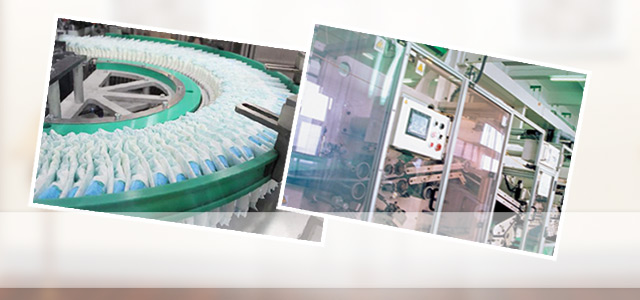©2019 All rights reserved. Chinaunicare.com All rights reserved
NEWS
With more income, sophisticated Brazilian consumption of disposable diapers
The market for disposable diapers for children comes through a phenomenon of sophistication.
Consumers have preferred more expensive products, but of better quality, spend less on products with less durability, power of absorption and comfort items for baby. The direct result is the reduction of this market by volume but, on the other hand, growth in revenue.
In the nine first months of 2012, according to the Nielsen Research Institute, this market grossed nearly r $ 2.7 billion — high of 6.6% compared to the same period in 2011. Volume was decrease of 3% in comparison of the first nine months of last year and the same period of the previous, from 197 million to 191.2 million packets.
"It is interesting to note that the lower classes have a purchase and usage behaviour that the upper classes had 20 years ago", says Luiz Gaspar, market analyst from Nielsen.
The great booster is the increase of income, which creates two opportunities: accession of new consumers who still use cloth diapers, and sophistication of those who already consume cheaper versions of the product.
"This trend should continue, especially because, when we talk about caring for babies, the mother is willing to leave to buy for themselves and consume for the son," analyzes.
Baby care line, which includes diapers, discard wipes and products like shampoo, conditioner and diaper rash ointment, accounts for 40% of sales of Kimberly-Clark, whose revenue in the first nine months of 2012 reached $ 15.8 billion in the world. "This is our most important business," says Prya Patel, Director of the company's personal care category.
The focus of the Kimberly-Clark, whose key brand in children's diaper is Huggies Monica 's, it's called the high performance market, whose diapers cost, on average, 30% to 40% more than the most basic. "The mothers they see advantage, even with larger disbursement, because they have more quality and economize, since using less diapers a day," says.
Innovation is key to conquer these consumers, Kimberly-Clark provides for a fee of $ 55 million for product development and communication in 2013. And the first releases are starting to come out of the oven. This month, the company launched the line for newborns, with handkerchief moistened, foam SOAP and diapers with softer material. "Innovation is fundamental, because every three years we renews the mothers of this market. And every time have to meet the need of this mother, bringing news, "says Prya.
The plans include $ 100 million for a factory in Camaçari (BA), which will be opened in April. It will be the fifth in the country and produces protective and hygienic absorbent diapers, and toilet paper.
Rodrigo Padilla, Manager of Pampers, leader of P&G, says that the presence in this market depends entirely on innovation, due to turnover of consumers. And, in addition to innovate, the challenge for manufacturers is to convince consumers to try a diaper of superior quality and price.
"In our portfolio, we see a greater growth of diapers with higher added value," he says.
The top-line brand diaper, Pampers Premium Care, however, is not the fastest growing. The champion is the Total Confort, occupying an intermediate place in the portfolio. The performance, says Padilla is due to the short time of Premium Care market, launched in July. "She already has three points of market share. Is already larger than the nocturnal and Diurnal, which descontinuamos. And it has enormous potential, "he explains.
Pampers is a brand of P&G globally, with revenues of $ 10 billion. And Brazil, along with China, is the market that grows more accelerated.
The company has a nappy factory in the country and imports the moistened scarves Spain.

